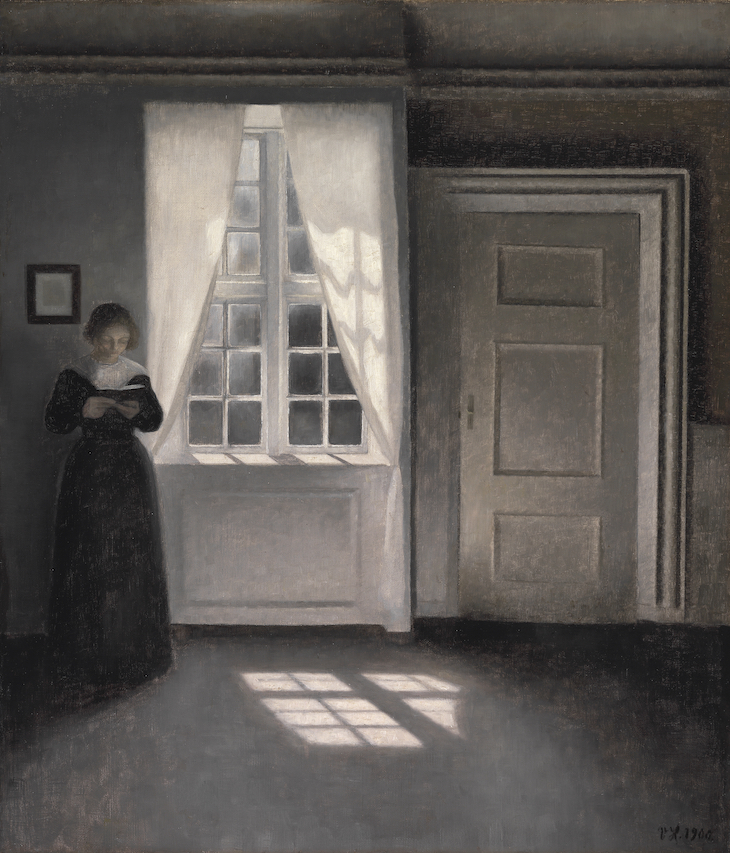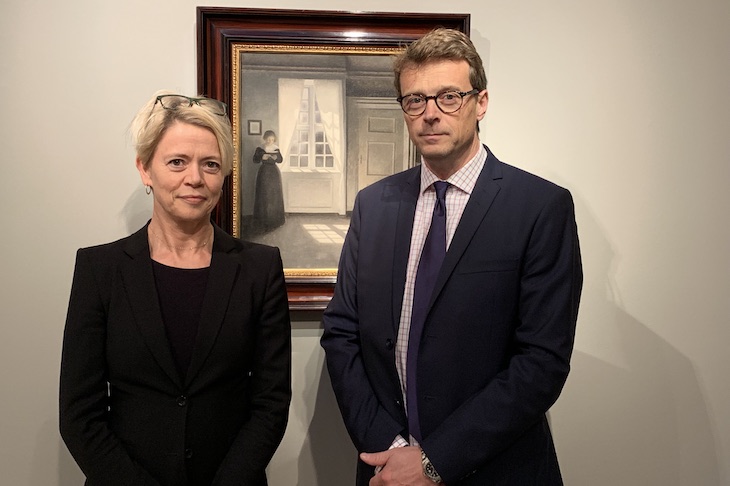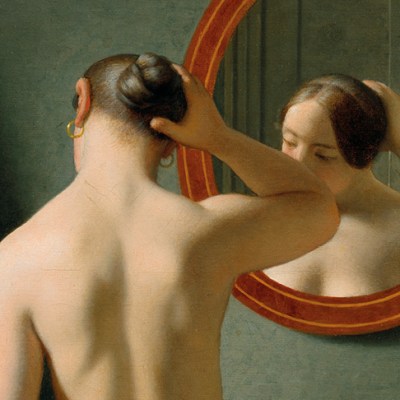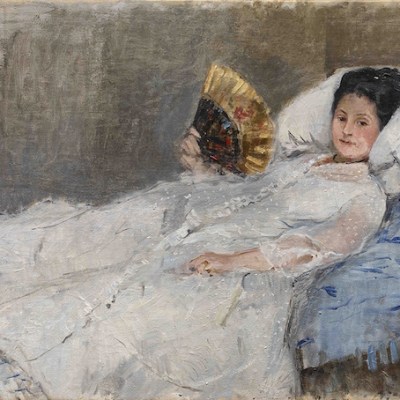At its live auction on 26 November, Bruun Rasmussen is offering Vilhelm Hammershøi’s Interior, Strandgade 30 (1900). In advance of the sale, Frederik Bruun Rasmussen, international sales and valuation director, and Julie Arendse Voss, head of fine art, discuss the history of the firm and its extensive experience of handling works by Hammershøi – as well as the timeless qualities of his paintings. Bruun Rasmussen sponsored the Apollo Summer Party in 2019.
Arne Bruun Rasmussen launched the auction house in 1948. How far does the company today reflect the business that he founded?
Frederik Bruun Rasmussen: My grandfather had worked for 19 years at the leading Danish auction house of the time, Winkel & Magnussen, before he left in 1947 to set up his own auction house in the heart of Copenhagen – at Bredgade 33, where we still are today. At that time it was all about antiques – everybody loved big baroque cabinets, Augsburg silver, and other categories that are difficult to sell today. Things have turned around 180 degrees: today our leading markets are modern paintings and design, especially Danish design from private Danish consigners. That’s a field which attracts foreign buyers to Bruun Rasmussen, because we have so many consignments that come with good provenance and original receipts.
I’m the third generation of the firm, and of course my father is the second. My grandfather is somewhere up there watching and making sure that everything is the way it ought to be. I feel like he’s still around somehow, and that he would be proud of us.
How important is the idea of connoisseurship to the auction house?
FBR: What’s extremely important to Bruun Rasmussen is knowledge – and that the experts are able to talk to the clients. You need to have expertise and the ability to communicate. I like to draw a parallel with football, where there’s something called the Fair Play Award. We want to be the fair-play auction house, to make sure we describe objects 100 per cent correctly. We want to have long-term relationships with our clients and potential clients, and we want people to know that Bruun Rasmussen is trustworthy. It’s not in our DNA to take shortcuts.
Julie Arendse Voss: That’s been very important with this Hammershøi painting. The trust the client has put in us, to lift this consignment, is all based on our expertise in this field.
FBR: Bruun Rasmussen has been selling works by Hammershøi since the late 1950s – we’ve sold about 160 of them, from an oeuvre of around 400 – so we’re probably the leading auction house in the world when it comes to provenance research on the artist. We have experts like Julie and our colleague Birte Stokholm, whose been with Bruun Rasmussen for nearly 40 years, so there’s a lot of knowledge there.
What makes this particular Hammershøi interior so exceptional?
JAV: Where do I start? The painting shows the interior of Strandgade 30, where the artist and his wife Ida moved in 1898. This was the place where he found the perfect setting for the idea of his interiors. He painted 15 works in this particular room, I think. It faces the courtyard, and you see the window and the door, with Ida facing us. Eight of those 15 interiors are in museums: in the Met, the Tate, the National Gallery of Denmark and others. This is as iconic as Hammershøi gets.
Interior, Strandgade 30 (1900), Vilhelm Hammershøi. Bruun Rasmussen, estimate €2.6m

There is nobody quite like Hammershøi: those silent rooms, made up of light and darkness, with a kind of absence that seems to interest many people today. It’s only the figure of Hammershøi’s wife, in her turn-of-the-century dress, that places this painting historically. I think this work could attract a contemporary art collector…
FBR: Or a collector of Old Masters. There’s always this moment of recognition with Hammershøi: his greys are so distinctive, in the way that a certain blue can only be by Yves Klein, or a certain white by Manzoni.
How often does a painting of this quality come to the market?
JAV: A really good interior comes up for auction every second year, more or less. Of course you also see landscapes and portraits and a lot of drawings, which appear more often. Bruun Rasmussen holds the auction record for a Hammershøi landscape – a work that was bought by the David Collection in Copenhagen for £500,000.
What should people look out for in terms of condition when approaching Hammershøi’s paintings?
JAV: They’re usually in a good condition – with this one, we’ve not traced any deterioration or colour-changing of the pigments. The mounting of his works can be peculiar, because he did it himself, and he moved the canvas around before he mounted it on the stretcher. He was very exacting about the framing; he thought photographically, and had a huge collection of photographs from the time – not picturesque photographs, but postcards of things like the backyards of Copenhagen. He had a camera himself and took portraits of Ida and himself on honeymoon.
Hammershøi is well known to international audiences. Which Danish or Scandinavian painters do you feel have been dormant on the international market?
JAV: That’s the million-dollar question. One of my favourites is Laurits Andersen Ring – a contemporary of Hammershøi, but a totally different figure. Hammershøi was sophisticated and intellectual; L.A. Ring was a man of the people and the land, and he made wonderful landscapes. There’s currently an exhibition of his work at the National Nordic Museum in Seattle (until 19 January), which is moving on to the Bruce Museum in Connecticut in the spring. I hope that more people will see the quality in Ring that they’ve already discovered in Hammershøi.
FBR: There are so many wonderful Danish designers and artists that have very reasonable prices compared to their French or Italian counterparts. Take the painters of the Danish Golden Age, for instance.
There’s been a high demand for Danish modern design in recent years. How difficult is it to source important pieces?
FBR: We rely on sources in Denmark, often pieces which the family bought directly from designers such as Finn Juhl, with original receipts from the ’40s or ’50s. I can’t repeat enough how important provenance is in this area. Our biggest market surge has been from American buyers – and the wonderful thing is that they they’ve known about Juhl, Hans Wegner, Georg Jensen and others for a long time, but now they want the best pieces.
For more information, go to www.bruun-rasmussen.dk.



